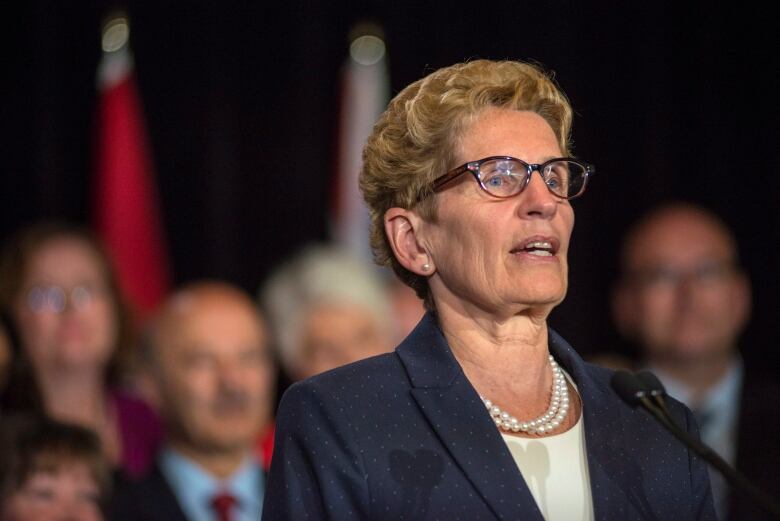What the CPP boost means for the average Canadian worker
Canada Pension Plan will replace roughly 30% of a worker's earnings in retirement
The Canada Pension Plan will soon start collecting more of your money to provide support later in retirement, after the federal government and most of the provinces hashed out an enhancement plan Monday.
Depending on whom you ask,the hike is either a much-needed shot in the arm for middle-income retirees or another blow to thebottom line for businesses.
- How the federal and provincial governments made a deal on CPP
- Premier Wynne says CPP deal wouldn't have happened without her advocacy
The federal government hopes to finalize the agreement by July 15 of this year and then begin collecting more premiums from workers and employers alike starting in January 2019.
What exactly does this deal mean for the average Canadian worker? Here is a look at what the changes mean.
1. What happens to my premiums?

Currently, a worker and his or her employer eachcontributes4.95 per cent of the worker's incomeannually onearnings between $3,500 and$54,900 a year to the plan.
That is set to change with a one percentage point hike to premiums (up to 5.95 per cent each) phased in over five years, starting in 2019. Bythe time the higher premium is fully phased in, in 2024, a worker earning $50,000 annually will payroughly$25a month more in premiums or $296 more a year.
- Deal on Canada Pension Plan reform was swift in policy-making terms
- Ontario scrapping pension plan after making deal to enhance CPP: CharlesSousa
That will be followed byan increase in the maximum pensionable earnings level to $82,700 from $54,900, phased in over two years, meaning higher-income earners will pay further premiums but will stand to receive even higher retirement benefits.
The CPP premium on income between $54,900 and the new maximum, $82,700, will be lower it is expected to be 4.0 per cent rather than 5.95 a spokesperson for Finance Minister Bill Morneau said in an e-mail to CBC News.
2. What happens to my benefits?
In plain terms,a middle-income Canadian entering the workforce now who earns an average of $50,000 a year would receive a pension of $16,000 a year (in today's dollars) in retirement, instead of the $12,000 allocated under the current regime, according to Finance Canada.
But current retirees willreceive no additional money. It is younger workers, who will contribute the higher rate for longer, who stand to gain the mostwhen they eventually reach retirement age.
And with the significant increase to maximum pensionable earnings after 2025, higher-income Canadians will receive even higher benefits in the future.
3. How does the deal affect lower-income Canadians?
There was concern in some circlesthat a premium increase would hurt lower-income Canadians by taking more of their disposable income during their working years for a relatively small increase in retirement.
To offset any financial pain, the federal government has agreed to expand an existing refundable tax credit known as the working income tax benefit (WITB) to offset the higher premiums. The maximum payout for that program is currently $1,800 for a family earning less than $28,000 a year.
For higher-income earners, the premium on the income above $54,900 will be tax deductible (taxpayers will be able to "write them off" come tax time).
4. No 'made in Ontario' plan
Ontario Premier Kathleen Wynnecampaigned on launching a provincial program in the face of opposition from the previous Conservative government, which was reluctant to levy higher premiums on businesses.
Former prime minister Stephen Harper threw up a number of roadblocks, at one time saying he was "delighted" to forbid the Canada Revenue Agency from working alongside Ontario to ease the implementation of its plan.
Ontario's pension plan, which was all but finalized and set to roll out in 2018, will now be scrapped.
While Wynne pushed hard for a national solution to address slumpingretirement savings she called herself the "thorn in the side" of her colleagues on the issue she was forced to lower her expectations in the end.

The enhanced CPP will be less generous than the proposed Ontario retirement pension plan, which would have imposed higher premiums and delivered more benefits a further $2,000 a year, roughly, for the average worker earning $50,000 a year.
"Ontario's determination has paid off with a national framework,"Wynne said Monday.
Perrin Beatty, the president and CEO of the Canadian Chamber of Commerce, came out swinging against the new, more generous CPP, but said a "silver lining" to the announcement was that it ended Wynne'splan.
"The worst thing Canada can do now is end up with a patchwork of retirement plans. Such a system would severely impact worker mobility and regional competitiveness across the country," he said in a statement.













_(720p).jpg)


 OFFICIAL HD MUSIC VIDEO.jpg)
.jpg)



























































































